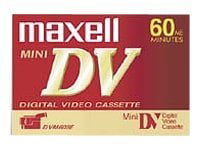

#Dv tapedeck how to#
We can save these clips individually or you can export them all as one clip.ĭrag your clips into the timeline (if you want individual clips saved as unique files, you will need to repeat the following steps for each clip separately - our screenshots will show how to export one long file using all of the captured clips) This happens because it is trying to automatically detect new scenes. You may also notice that iMovie chopped your tape up into multiple clips. Now we have the media in your project, but we still need to export these clips as a file in order for you to properly save this captured media. Once you have finished playing through the tape (or the portion of the tape you wanted to transfer) click “Stop Import” - iMovie will stop recording and you can close this window. In the top left corner of your image, iMovie will tell you how long you have been recording. Now you should see a frame of your tape displayed in iMovie’s import window.īe sure to rewind your tape to the beginning, if necessary.Ĭlick “import” - your tape will automatically start playing and importing to your project. Select the device you are capturing from - for our DV transfer stations this will be “Sony HDV-VCR” If you do not see your device, it may be off or unplugged. In the left panel of this window, you should see a list of devices including any hard drives that are mounted and devices available for capture.

Once you have a project open, navigate to File/Import Media If prompted to start a new project, select “Movie” as your project type Turn on the DV deck and the preview monitor. Instead, we can use Elgato Video Capture or iMovie, which support this legacy format. If your computer is running Mac OS Catalina or Big Sur, you may find that the DV format is not compatible in programs like Adobe Premiere. If you are digitizing DV, miniDV, or HDV tapes, the only resource you need to reserve is our Digitization Station in DPL1.(DPL1 station 15) This computer is connect to an HDV deck via firewire.


 0 kommentar(er)
0 kommentar(er)
